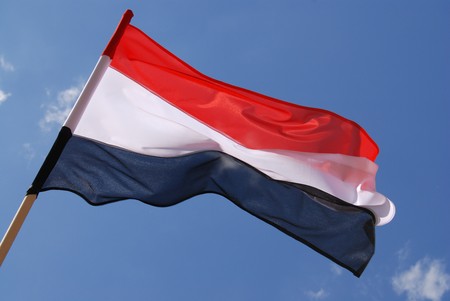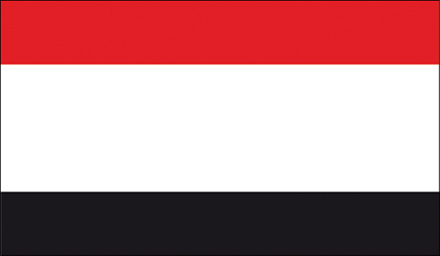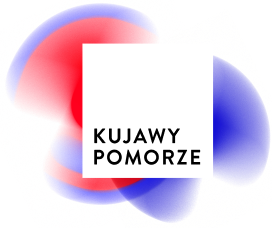
Flag
The flag consists of three horizontal, parallel stripes (from top to bottom): red, white, and black, with varying widths expressed in the ratio 1.25/5 : 2.5/5 : 1.25/5. The width-to-length ratio of the flag is 5:8. The flag was designed by Lech Tadeusz Karczewski based on a proposal from the research conducted by Jan Kazimierz Wroniszewski in May 2000.

The design of the flag of the Kujawsko-Pomorskie Region reflects the classical idea of vexillium, which originally symbolized a simplified representation of the coat of arms, reduced to the appropriate arrangement of heraldic colors. (Vexillium is a general term for fabric signs, such as flags, banners, and standards, attached to poles or hoisted on ropes.) Such signs (flags) have been used since the Middle Ages to mark seafaring vessels, so their primary identification relied on the arrangement and clarity of colors. The connection between a flag and a coat of arms is very close, as seen in the example of the Polish national flag, where the top white stripe represents the heraldic emblem (the eagle), and the bottom red stripe represents the field color of the coat of arms. Similarly to the heraldic field, the flag’s fabric is hierarchically arranged. The part closest to the pole (corresponding to the right side of the coat of arms from the perspective of the person holding the shield) takes precedence over the free end, and the upper part of the fabric takes precedence over the lower.
The flag of the Kujawsko-Pomorskie Region refers to its coat of arms, which in a silver (i.e., white) field shows a red half-eagle and a black half-lion under a shared crown. The main colors of this coat of arms are red, black, and white. Therefore, their hierarchical arrangement should follow the same principle: starting from the top part of the flag, first red and black as the colors of the emblem, then white as the field color of the shield. However, when dividing the flag into stripes, the white stripe, being visually “lightest,” is placed in the lower section. In this case, it was recognized that alongside purely formal considerations, the aesthetic expression of the sign must also be considered. Therefore, the black stripe, being visually “heaviest,” was placed in the bottom part of the flag. Such solutions were and continue to be used.
In addition to formal considerations, the aesthetic expression of the sign must also be taken into account. The proportions of the stripes result mainly from the desire to give the flag of the Kujawsko-Pomorskie Region a distinctive character that differentiates it from both contemporary and historical flags (the same colors, though arranged differently with three equal-width stripes, were found in the historical flag of the German Empire).


